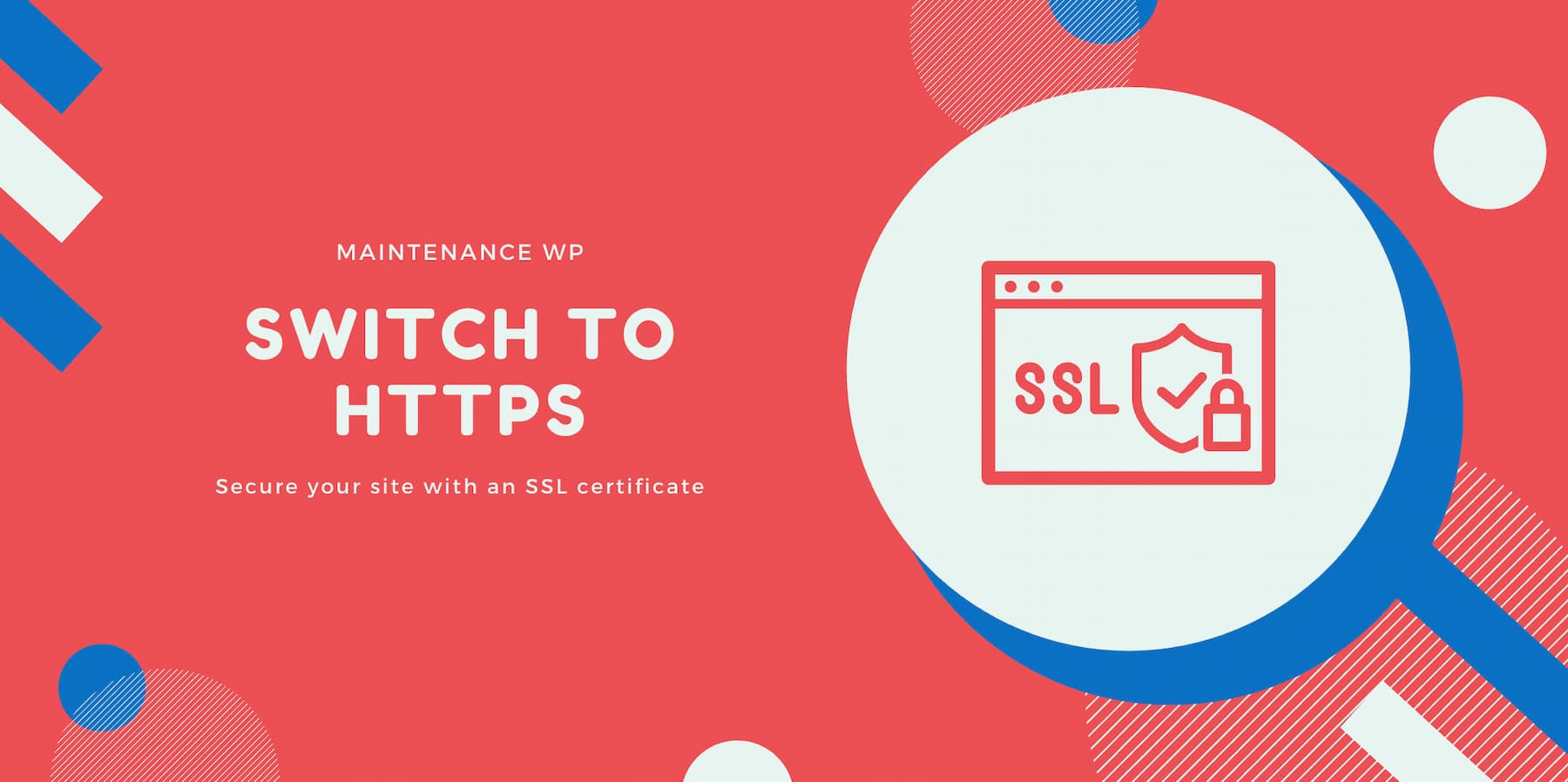Going HTTPS on a WordPress site is now more than necessary if you want to acquire new users and gain their trust by offering them a secure platform.
But why is it necessary to migrate a WordPress site to HTTPS?
What does it really mean?
Maintenance WP gives you all the answers to these questions!
What is HTTPS?
You have probably already surfed on a website that may be a little old, or managed by amateurs, and your browser has warned you that your connection was not secure and that, possibly, you are exposing yourself to data theft by hackers. This is a site that is not in https. HTTPS, or Hyper Text Transfer Protocol Secure, is a security protocol that aims to encrypt information exchanged with a website.
If this protocol is not always necessary on a blog, or on a news site, it becomes necessary as soon as data is entered on the site in question. This can be classic information allowing the creation of a profile for example, which implies filling in personal data. But it is especially when it is a question of a site of on-line sale, that to pass in https takes all its sense, because the data of payment are sensitive and must be well protected.
Switching a WordPress site to https will therefore allow you to add different levels of security, such as data encryption for example, or the process of checking the validity of the website.
A site in HTTPS will be easily recognizable by the small padlock appearing in the address bar, allowing the user to make sure that the site he is browsing is well secured.
Why should I upgrade a WordPress site to HTTPS?
When you create a WordPress website, it will not be HTTPS by default.
WordPress can be used to create many different kinds of websites, and switching to a more secure protocol may not make sense from the start. You can therefore choose to switch a WordPress site to https at the time of its creation, but also after it is online. For example, when you are welcoming more and more visitors, when you want to offer them a personal space, or when you want to devote yourself to online sales, switching to https will be preferable to secure the data.
Beyond all that, switching a WordPress site to https is also a confidence builder for the user, who needs to know that the site they are browsing is concerned about the security of their users’ data. A blockage by a browser, which informs the user that the connection is not secure, can be fatal for the entire business and give a very bad image of the company.
What’s more, Google tends to punish websites that have not yet switched to HTTPS, in order to favour the display of more secure sites in its results.
Switching your WordPress site to HTTPS will also help you optimize your SEO.
How to switch to HTTPS?
Switching a WordPress site to https requires advanced technical skills, and if you don’t feel up to the task, it’s best to entrust this task to a professional in the field.
Indeed, different steps are to be respected, because you must either migrate the website or create a new one to convert a WordPress website to https. You will then have to start by purchasing an SSL certificate from your domain name manager or another provider, depending on the offer you wish to take advantage of. This certificate will allow your server to enable https. You will then need to make a setting with your WordPress hosting.
You will also check that the links on the site are in relative format and not by URL, so that they are still readable once the migration is done. You will also have to remove mixed content, perform 301 redirections, add a canonical URL in https to simplify the migration on Google, check that the SSL certificate is effective, and many other things!
It is therefore a long and tedious process, which requires very technical skills. Switching a WordPress site to https does not give right to error, if a step is forgotten or badly done, the whole website can then stop working.
What’s more, launching into this type of manipulation without knowing what you are doing can take a lot of time, and the website will then remain inaccessible throughout the process. In short, entrusting this task to a professional, and preferably to the creator of your website, will often be preferable.



